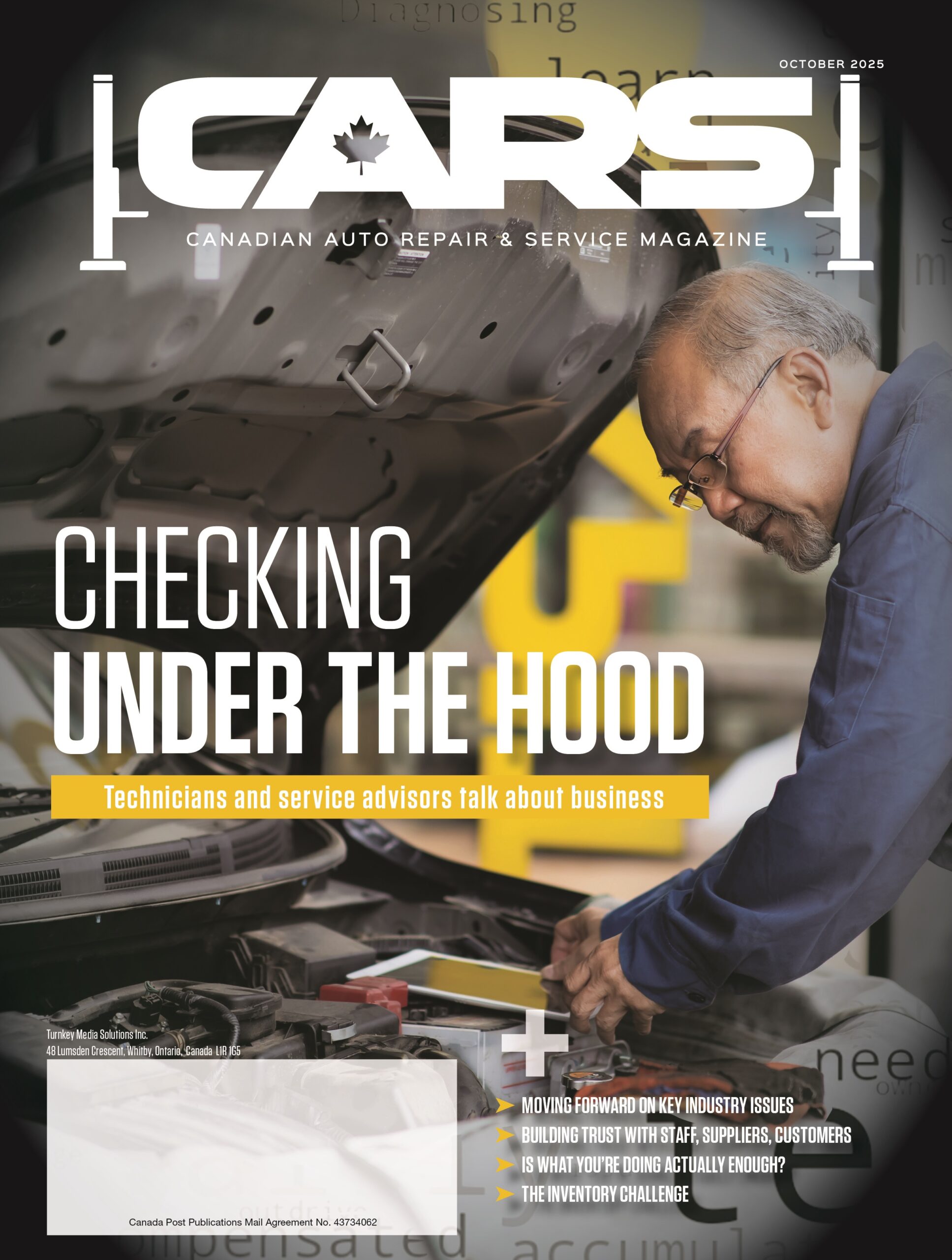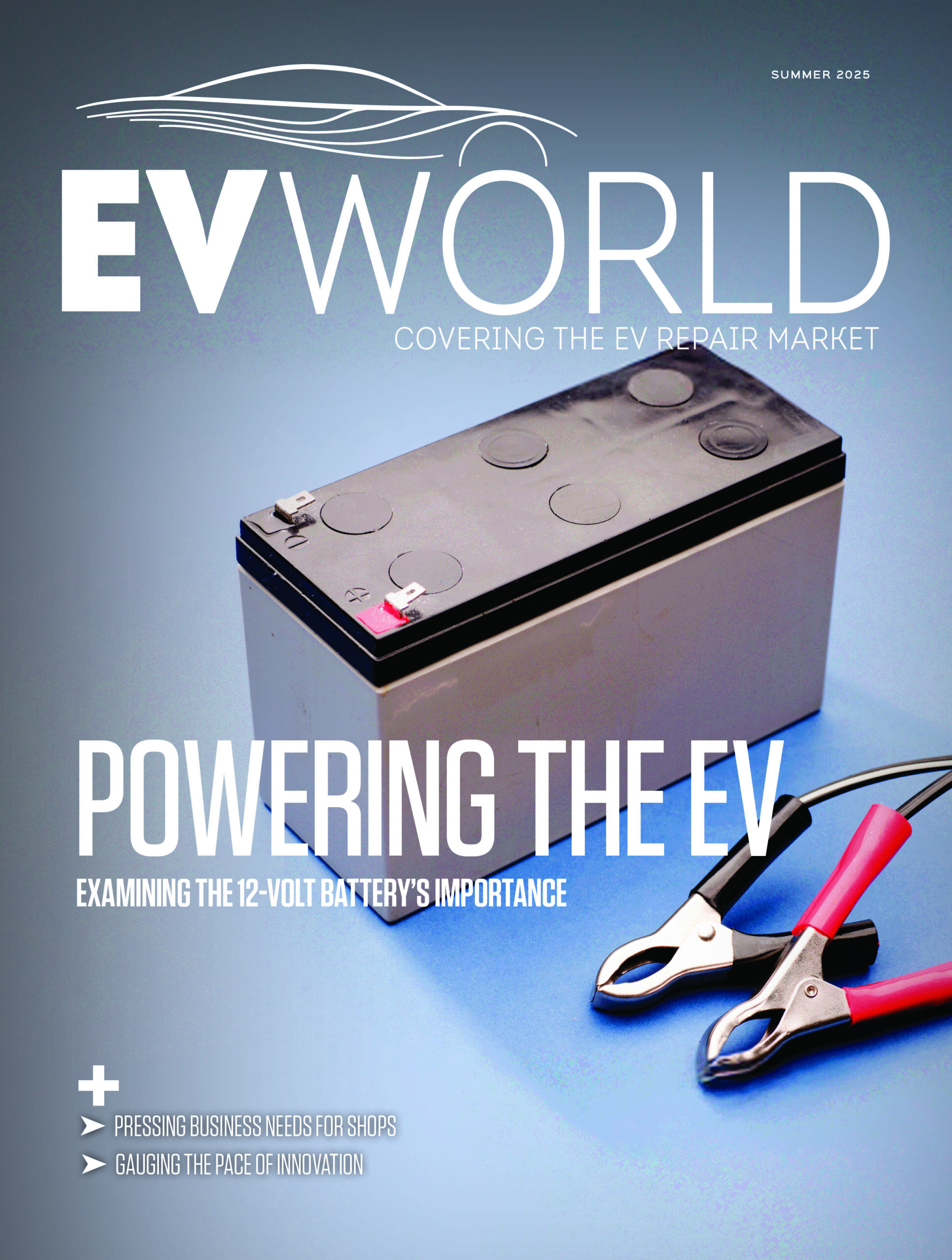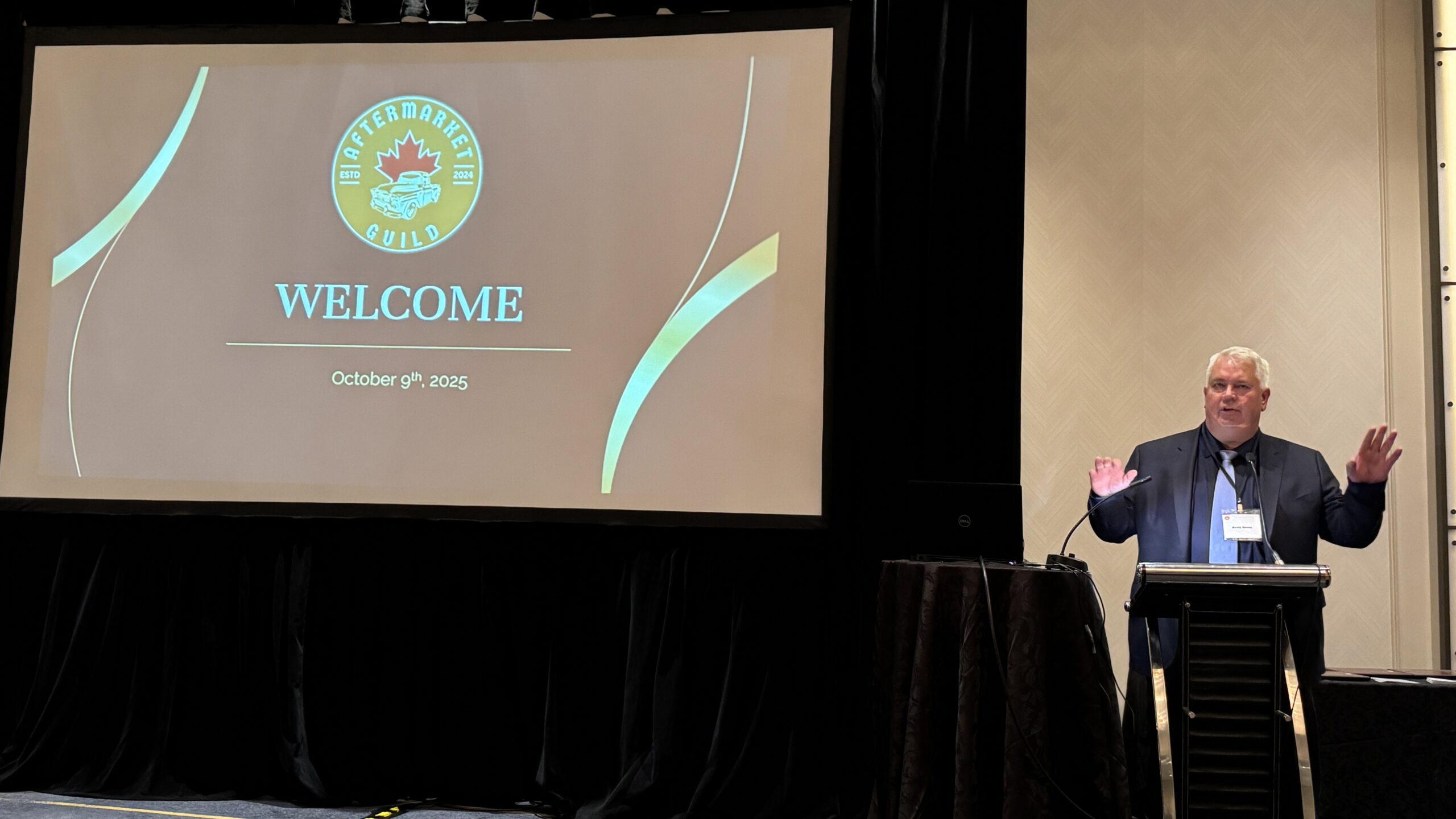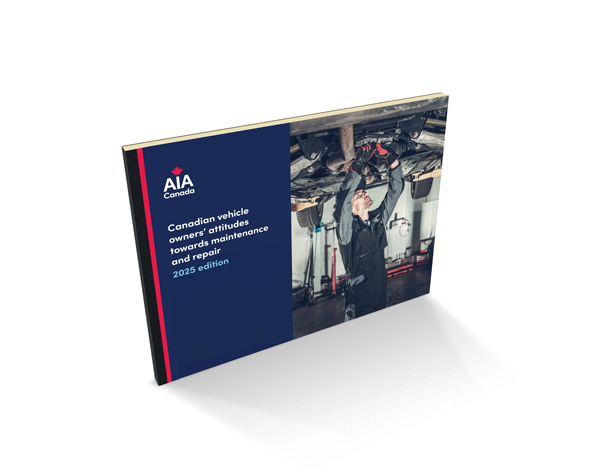
Tire dealers across Canada want government to finally settle the question of whether sensors for tire-pressure monitoring system (TPMS) are required in winter tires.
They say a significant number of consumers whose vehicles are equipped with TPMS systems routinely refuse the added cost of having sensors installed in their winter tires. That leaves tire shops in an awkward position because it’s unclear whether they’re legally allowed to hobble a TPMS system during winter months.
“Legislation from the federal government says if a vehicle comes in the shop with working TPMS, it must leave with working TPMS. But that does not include winter wheels and winter changeovers,” says Ray Galeta, a member of Tire Dealers Association of Canada (TDAC) board of directors. “That’s where the issue lies.”
Meeting in Toronto last week for its national trade show and conference, TDAC board members agreed it’s time to get the matter resolved once and for all.
They’ve referred the issue to a working committee that will poll regional tire associations and tire shops, develop an industry policy, and then take it to the federal and provincial governments.
“Part of the challenge here is knowing who to talk to on this,” said TDAC executive director Bob Bignell. “In the past, Transport Canada has passed the buck to the provinces, and provincial authorities have sidestepped the question entirely. But we need some clarity here.”
Galeta, who is also the executive director of the Western Canada Tire Dealers Association, said the major tire chains in the west have taken a stance against letting cars leave without working TPMS.
“All the larger organizations are saying that if the vehicle comes in with working TPMS, it has to leave with working TPMS,” he said. “That’s their position and they stick to it fairly stringently. They’ll turn customers away if they have to.”
Frank Connor, a TDAC board member and the president of the Atlantic Tire Dealers Association said governments shouldn’t leave the decision to consumers or to tire shops.
“If the federal government had just considered this matter when it originally passed the legislation (on TPMS use in Canada), we wouldn’t be having this discussion,” he said.
The big concern, of course, is liability. Talk has swirled around the industry for years about tire shops that have been sued by consumers who refused the installation of TPMS in their winter tires but whose vehicles were subsequently damaged in accidents.
At least one such case, in which an automotive service provider was sued for $6.5 million, was settled out of court for an undisclosed amount.
“We just don’t know the legalities of the situation,” said Bignell. “Writing a customer’s refusal on the invoice is not really protection for tire shops. So we need real clarity on the issue.”
Galeta suggested TDAC work with other groups, such as the Canadian Federation of Independent Businesses or the Automotive Industries Association of Canada.
“We need to figure out the right avenue to take, develop a strong case, and get some resolution as soon as possible,” he said.
TDAC president Richard Bender agreed, saying, “This is the number one point of confusion we’re having right now, because there’s no law to guide us on this. It would be so much easier if the federal government said if the car comes into your shop with working TPMS, it must leave with working TPMS – winter and summer. End of story. That’s one sentence, and it would be all we need.”
Related Posts
Comments
-
In regards to the TPMS issue and provincial safety standards, the only right answer is, if it came from the factory it should work as intended at all times. Enough said. This argument has been going on for decades. It should be that simple. TPMS was mandated by the government it should be working at all times. No different than day time running lights, but then again how many vehicles do we see on the roads without the day time running lights not working. In Ontario the new DOT regulations are a vast improvement over what we had, but still falls short of what is needed. It is time to implement annual or semi-annual safety inspections to renew stickers. We need people in this industry or representing this industry to have the guts to push forward on these and many more topics.
-
One option I have never seen mentioned, and we have yet to try it at our shop, but I see complete add-on aftermarket TPMS kits with valve cap sensors and a cigarette lighter display for as little as $59 cost , this could be a fast economical way to have TPMS for winter at a much lower cost and no removal of tires to add sensors
It’s not as nice as OEM but would still show the driver of a low tire-
With that being a great low cost option, depending on the weight of the add-on valve cap the centrifical force pulling on the valve stem could become a safety issue.
-
I haven’t tried one yet, but also a good add-on for older cars, as low as $49 a kit, but from what I’ve seen the valve caps can’t weigh 1/8th of an ounce, look like normal caps they’re so small , but again just an option, much cheaper, no labour cost, if the customer is a hard sell to do it right, $99 installed and a quick $50 profit for 3 minutes work ?
I see cars all the time with big heavy silly valve caps, or those colour changing ones to tell low pressure ? so these can’t be too bad
-
-
I agree 100%
-
Whatever happened did people forget how to check tire pressure with a tire gauge or are they just to lazy
-
It isn’t just about the driver knowing the tire pressure (which I admit is something that is fading away), but also the fact that things like emergency braking and stability control rely upon the tires being suffficiently inflate (but not over inflated).
-
-
-
In Nova Scotia our two year MVI inspections don’t require the TPMS light be out. The system doesn’t have to work.
PS: we put stickers on cars with Air Bag lights on, not required. Only the ABS light has to be out and system working.-
Here in Ontario, it’s opposite, we can pass a safety with ABS light on, but airbags must now work, new rules last year, finally, but TPMS, as ABS is an “option”, not a mandatory system
-
The new rules are simply convoluting what as already in place.
If a dash light is capable of telling the driver that the left rear speaker for the rear seat DVD player isn’t working, we have to document that the light is ON.
They didn’t need to change the rules, which does nothing except increase our work load. They simply needed to do their jobs and enforce what was already written, but that would mean a government worker would have to do just that.
Work….. and enforce the bad brakes, bad ball joints, the broken lenses and the bubble gummed fuel lines.
-
-
-
At this point, we simply say to the client: ” We can’t knowingly disable a safety system on a vehicle, for obvious liability reasons.” Most people are pretty accepting of this. TPMS has been around long enough that a lot people know what it is, they’re prepared for it when I price winter packages.
-
TPMS senors or systems are not mandatory by the government in Canada or else my honda civic would have them and they do not. There in lies that it is not a safety standard to up hold here in Canada. Down south it is a different matter. so now if it is not a safety system mandated how do you penalize a person for not having the system function. People are driving all over with abs lights on, srs lights on. and there is nothing the mechanic can do to hold the car. Calling the government agency will not work if they are not ready to step in immediately therefor it is futile to try and keep a customers car in your shop plugging a bay when the police will say if the bills paid release the car.
-
TPMS is a requirement for vehicles sold in the USA but this is a rare case where Transport Canada has not followed.
While federal authorities specify how vehicles sold in Canada should be built, it is up to the provincial authorities to specify maintenance criterias. So the answer lies with your provincial authority.
I just checked the Quebec regulation, there is no mention of TPMS.
It really puzzles me why manufacturers have selected to install these dumb sensors inside the tires, when Bosch had developed an alogorithm for its ABS system to identify underinflated tires (the leaky tire has a reduced Rolling diameter and will spin more revs/km) that needs no hardware and no maintenance.
-
The use of the wheel speed sensors to calculate the number of revolutions per mile, thus capable of calculating a tire that is underinflated, has been around since the 1980’s.
And it works.
The difference that many younger people in this trade don’t understand is, this system is an “indirect” indication rather than a “direct” system which is what is mandated in the USA.
It is also a more reliable system since it’s a simpler system.
K.I.S.S.
It’s high time to STOP THE ADD ON FLUFF that are touted as “safety systems”, which ultimately make drivers complacent to what the vehicle is already telling them.
There’s too much of it, and it breaks or gets confused and is NOT reliable and thus more dangerous under many circumstances. Think lane keeping that steers you right into a pothole which fractures a wheel completely.
Gee, I wonder why the TPMS light came on…..-
Yes, but the VS sensors cannot detect if all four tires are over/under inflated. Unfortunately, we have to cater to the lowest common denominator in these instances. Litigation has determined that.
-
-
-
‘@yves Boulancher. Lol that algorithm is complete crap. If you ever swap out a tire or have one worn down even a 1/32 of an inch more than the other 3 it’s already out the window. Unless you have awd with 50/50 weight distribution and 50/50 power distribution between front and rear that formula would never give you an accurate reading
-
Here is a different twist. With the price of new tires today, why not promote the sensor as a protection for your investment. The sensor will warn the driver long before a tire is destroyed. Even though it is cot classed as a safety device it is still very important non the less. As a professional you should make every attempt to recommend replacing the sensors with sensors not stems.













Leave a Reply